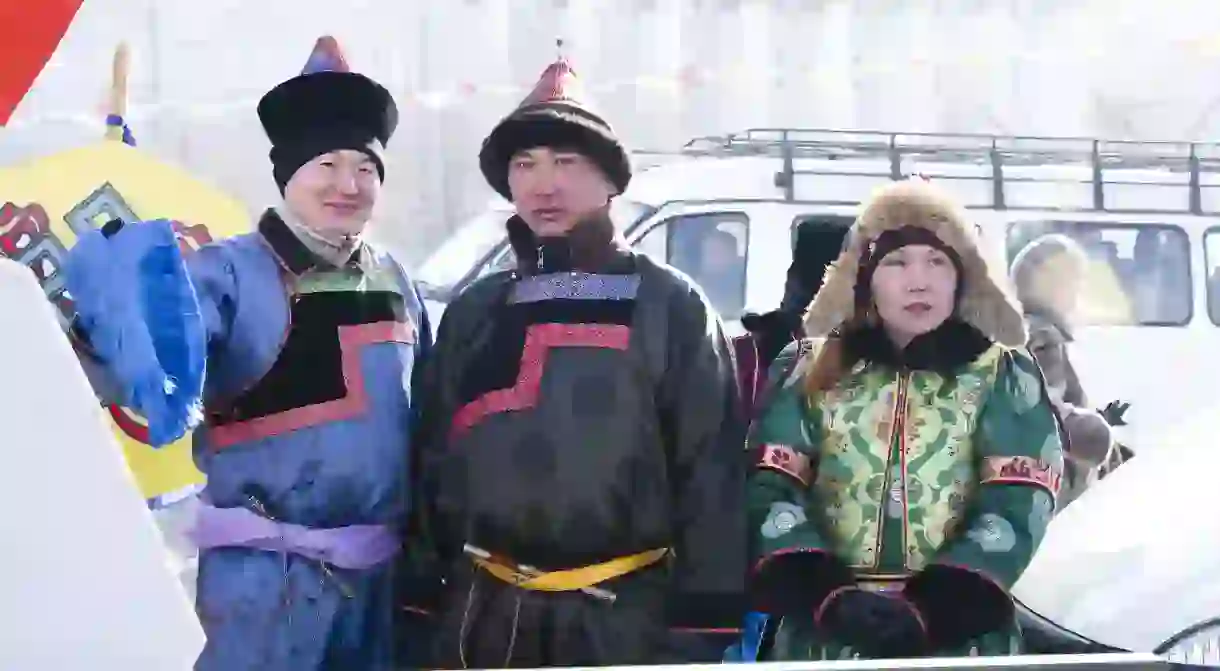An Introduction to China's Mongols

Chinese Mongols aren’t so distantly related to their northern ancestors, though their nomadic lifestyle is in danger of dying out. Mongols are considered one of China’s 56 ethnic groups, encompassing several subgroups of Mongol people, such as the Dzungar and the Buryat. With a Mongol population of over seven million, China is home to twice as many Mongols as Mongolia itself. Almost 70 percent of them are situated in the province of Inner Mongolia, which stretches widely across China’s northeast and northwest territory and shares borders with Mongolia and Russia. In this article, we’ll learn about China’s Mongols and how their ancient way of life is changing.
History
Inner Mongolia used to be a part of Mongolia, and the explanation as to why the two are now separated goes back as far as Kublai Khan, the warrior grandson of the great Genghis Khan. In 1271, Kublai Khan declared the Yuan dynasty as part of China’s Mongol empire. The collapse of this dynasty sent the empire into chaos, and many self-declared khans established disjointed khanates across Mongolia. This fracturing allowed the Manchus, a nomadic tribe from the east, to take hold of what they called Inner Mongolia, or the southern half of Mongolia. When the Manchus’ power grew enough to declare a dynasty in China (the Qing), Manchu leaders assigned Chinese representatives to govern Mongolia. The Qing eventually came to rule both Inner and Outer regions.
Fast forward to 1911, the year the Qing dynasty fell and dynastic rule in China came to an end once and for all. Outer Mongolia attempted to gain independence from China, but the Chinese refused. It wasn’t until a trilateral agreement was signed between Winston Churchill, Joseph Stalin and Franklin D. Roosevelt in 1945 that Outer Mongolia was finally granted the independence it had so long sought.
Inner Mongolia, of course, remained part of China and was named an autonomous region in that same year. Gradually, the Mongols in Inner Mongolia assimilated into Chinese culture, creating a further divide between it and Outer Mongolia.

Homeland
When it comes to terrain, however, Inner Mongolia is not so different from its long lost cousin to the north. A large part of the province is made up of grasslands, where the vast green of the grass and deep blue of the sky are broken up only by grazing livestock and the occasional ger (a Mongolian yurt). The western part of Inner Mongolia is also wide open, but full of barren desert rather than fertile grassland. And it wouldn’t be China without a few semi-uniform cities. At the center of these cities, you’ll find the provincial capital of Hohhot.

Culture
If there is one thing that the whole world knows about Mongolians, it is that they are nomadic. While it is true that Mongolian culture has changed little in the last few thousand years, Chinese Mongols enjoy – for the most part – a different life than those to the north.
In 2001, 650,000 Mongolian-Chinese nomads and herders were forced to relocate to the cities due to overgrazing that had been causing sandstorms. These 650,000 nomads are still struggling to find a place in the cities, where Han Chinese make up the majority, and the Mongolian language is offered only as an afterthought in schools.
Additionally, for the last few generations, the Chinese Mongols have been intermarrying with the Han, who were originally encouraged to move to Inner Mongolia for its wealth of natural resources like coal. Despite this, Mongolian culture has not died out just yet in China. Most Chinese Mongols still speak Mongolian, and they write with old Mongolian script rather than the Cyrillic script that Mongolia itself has adopted.

Some are still nomads, picking up and putting down across the grasslands as they follow their herds, but all in all, the Mongols are seen as a model minority in China. Few dissidents have arisen from their ranks, and a move for Inner Mongolian independence has never been made. They have continued to walk the thin line between preserving their ancient heritage and assimilating with the Chinese majority.













